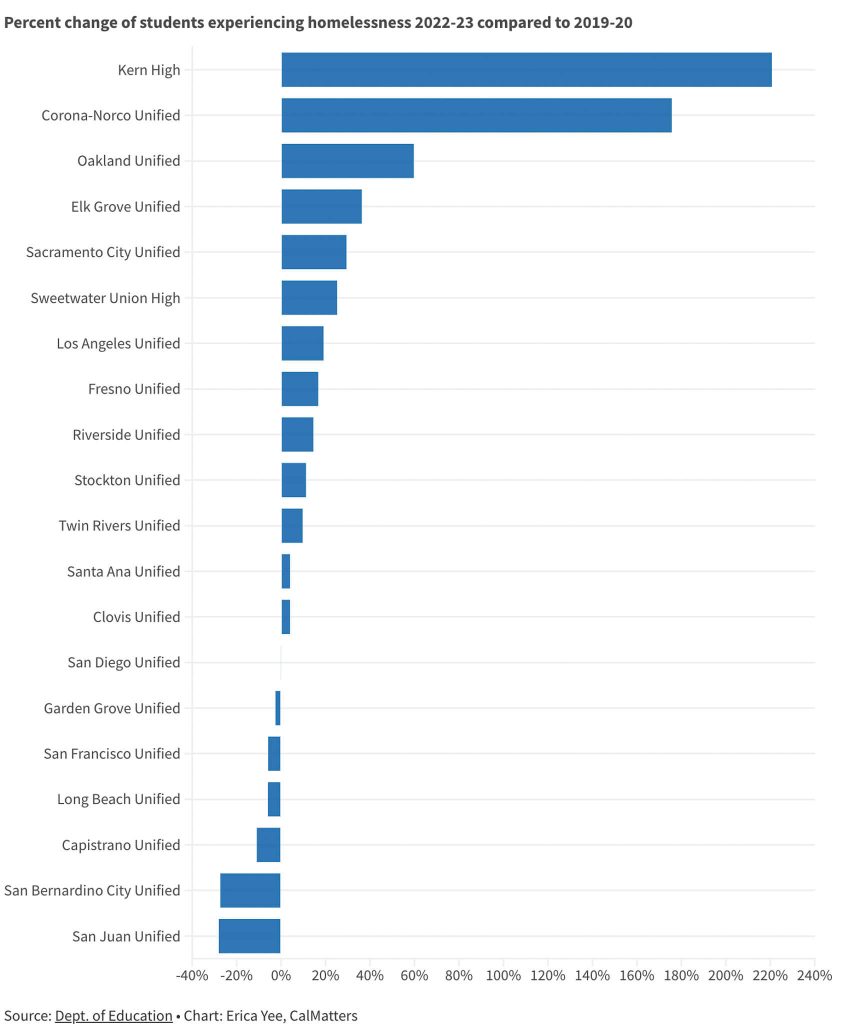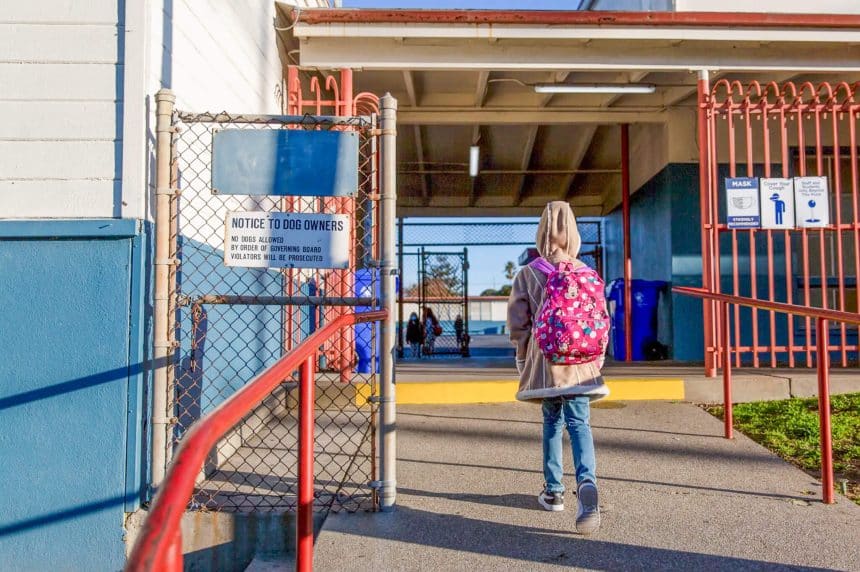CNUSD Numbers are Second Highest
Homeless Students
After the number of homeless students dropped during the early part of the pandemic, experts say the lack of affordable housing is fueling an increase that may continue to escalate.
By Joe Hong and Erica Yee
As the number of unhoused students in California’s public schools continues to rise to pre-pandemic levels, experts and educators fear that today’s economy paired with the state’s unrelenting housing crisis will lead to unprecedented rates of homeless youth.
According to updated data released today by the California Department of Education, there are about 5.9 million students enrolled in public schools this school year, close to 40,000 fewer students than last year or a .7% drop. But the number of students experiencing homelessness increased by 9%, about 16,000, to a total of approximately 187,000 kids.
The overarching cause of homelessness among all Californians is the perennial shortage of affordable housing in the state, according to Angela James, a researcher at UCLA’s Center for the Transformation of Schools.
“It’s alarming to me, quite frankly,” James said. “Housing instability may be deepening in California as a result of the pandemic.”
The new data signals a return to pre-pandemic numbers. Last school year, about 2.9% ofstudents qualified as homeless. The percentage is up to 3.2% this year, about the same as it was in 2019-20.
“As a state we have not made the housing and well-being of our population a priority,” James said. “Sadly, social policies have not been responsive to the needs of young people and their families.”
Experts struggle to explain why homeless numbers dropped during the pandemic. They said students and their families may have been moving around during the early months of quarantine, so they may not have been counted. Or unhoused students may have just been falling through the cracks.
“In some cases, districts could be getting better at identifying students,” said Dion Burns, a senior researcher at the Learning Policy Institute.
Student homelessness rose this year for the first time since 2020. The count includes students living in motels, trailer parks, campgrounds or public spaces.
While statewide numbers indicate a return to pre-pandemic levels, 13 of the 20 largest districts in the state have more students experiencing homelessness now than they did in the 2019-20 school year. At one district, Kern High, the number more than doubled.
Since 2015, rates of homelessness were rising gradually up until 2020, when they started dropping steadily. Student homelessness rose this year for the first time since 2020.
The California Department of Education uses a federal definition of homelessness that includes students living in motels, trailer parks, campgrounds or public spaces.
School districts and county offices of education employ liaisons who keep tabs on students and families experiencing homelessness. James said they’re often shorthanded, so collecting data may have been a challenge, especially during the chaos of 2020 and 2021.
At the Monarch School, a school for unhoused students operated by the San Diego County Office of Education, administrators have seen an increased need. Jesus Nunez, the communications director at the school, said students are experiencing more housing insecurity in recent years, along with more of the mental health challenges and traumas stemming from a lack of stable housing.
“If students’ basic needs aren’t being met, it doesn’t matter what teaching strategies are being used,” Nunez said.
The Monarch School serves about 300 students. The school day is longer, starting at 8 a.m. and ending at 6 p.m. Nunez said the school offers more counseling and services like art therapy.
“I think everybody at the school wishes we could do more,” he said. “We don’t turn away a lot of students, but unfortunately some students do need to go back to their school of residence because there isn’t space available here.”
Many unhoused students and their families have been evicted from their homes, James said. She recalled her own personal trauma of having her family’s furniture moved out to their front lawn when they were evicted. With no home, students and their families might go from one temporary shelter to another with no sense of how long they can stay in one place.
“The degree to which that impacts a child cannot be underestimated,” James said.
She added that teachers are fortunately better prepared to work with these students than they were in past decades. When a student acts out or even gets violent, a teacher might try to calm the student instead of resorting to disciplinary actions like detentions or suspensions.
According to the state’s new data, the numbers of foster youth, students with disabilities and students from low-income households have all increased by between 2% and 3%.
The rate of decline for overall enrollment shows signs of stabilizing after plummeting in the first years of the pandemic. Kindergarten enrollment took the biggest hit but is starting to climb back up. Enrollment went from about 71,000 in 2020-21 to about 130,000 this year, but state officials said it’s partly due to the state’s expansion of transitional kindergarten.

For more Riverside County News visit www.zapinin.com.


